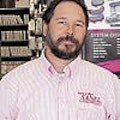America invented the nation on wheels and the open road. Ever since Henry Ford figured out how to build a car that the average man could afford, we’ve been on the move.
This now covers over 100 years of history, and there are none left with firsthand knowledge of the early days. Thankfully though, some places have
preserved our motoring
heritage.
On a recent motorcycle trip through Maggie Valley, N.C., I had the good fortune to visit the Wheels Through Time museum. Founder Dale Walksler calls it the All American Transportation Museum and The Museum That Runs; it is both.
The car collection covers eight decades and includes such landmarks as a 1914 Locomobile, a 1929 Duesenberg and the world’s first ’32 Ford hot rod, built in 1934.
The real focus of the museum, however, is motorcycles. Walksler has amassed a collection of over 200 American-built motorcycles, including the earliest Indians and Harleys along with 20 other marques.
Some of these are one-off specials or racing bikes; others are just bikes that were ridden and left in the barn. There are also many finely restored examples of the best that the U.S. could produce, such as a 1909 Pierce-Arrow four cylinder. There’s a display of military bikes and equipment powered by motorcycle engines, and some homebuilt farming and industrial equipment made from old bike bits.
What makes this place different, however, is that about 90 percent of the vehicles are roadworthy, and Walksler is more than happy to start them for you.
A museum with sterile static displays behind velvet rope can only show what a machine looks like. Seeing and hearing it run, smelling it, seeing what wears out and what leaks shows what the engineers and consumers of the era faced. Since the collection covers so many years of Indian and Harley, you can also see firsthand what was done to correct and improve those leaks and wear points.
So what does all this have to do with cars and aftermarket parts? Car and motorcycle technology weren’t too far apart up through the ’30s, and bikes were often used more as transportation and utility vehicles than as toys.
That attitude changed after WWII. Automotive technology progressed at a faster pace, and the number of volume American motorcycle producers dropped to two, then one. The automotive aftermarket was always well supported, but the two-wheel market wasn’t as lucky. Riders were often left to their own ingenuity if they wanted something different than what Milwaukee or Springfield produced.
Many of Walksler’s bikes are unrestored originals with period modifications and homebuilt custom touches. One look at these bikes shows you the inspiration for today’s custom bike market, a market very well supported by a huge aftermarket and mass media presence.
Just as Ford’s modest little Model T spawned an entire industry, so, too, did the machines represented in Wheels Through Time’s collection; it just took a little longer. This impressive place is worth the trip if you can do it. Like a local car show or cruise night, the museum gives a lot of insight into our automotive past and how we got to where we are today.
And who knows, you might even have the next “big thing” tucked away in your own barn or garage.
About the Author
